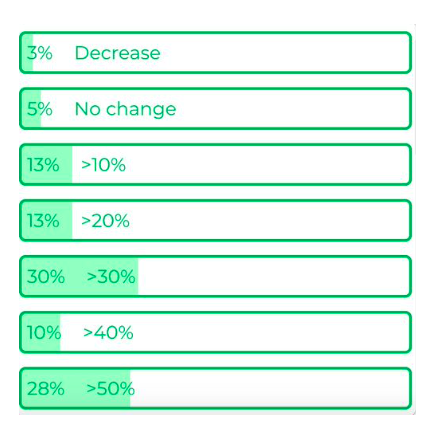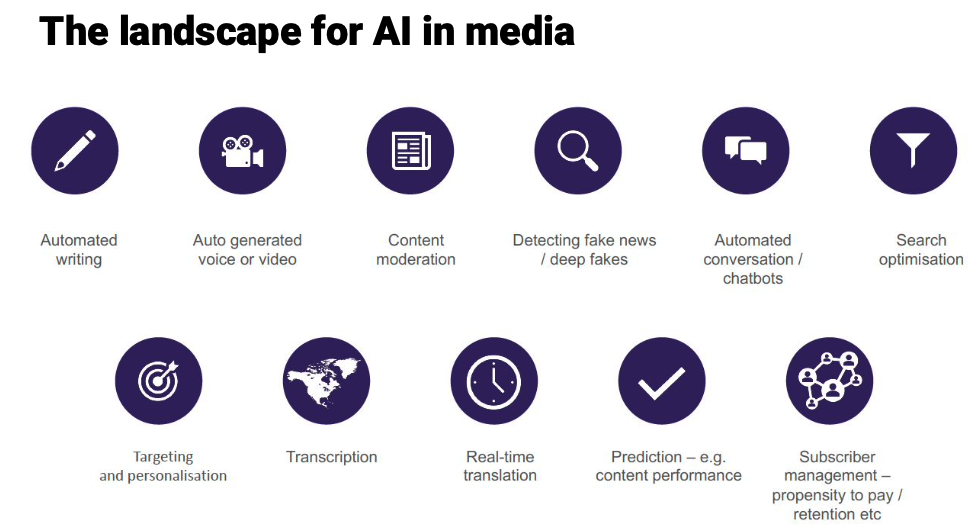Last week WAN-IFRA released a report covering “World Press Trends” for 2020 and 2021. In 97 pages of insights and charts, the report explores a variety of topics like revenues growth, print vs digital, COVID, advertising or diversity.
We have selected 6 key charts from the report that you shouldn’t miss.
Read our most recent article about WAN-IFRA’s World Press Trends Report 2023-2024.
1. Digital Circulation Revenue sees 23% YoY growth
At the beginning of the pandemic, going digital was the natural choice for publishers across the world. This digital switch enabled publishers to continue their work of providing reliable news, whilst accelerating a process of digitalisation that many had not even seriously considered. It also allowed readers to get reliable news fast and at their fingertips.
Thanks to this investment and commitment from publishers, the circulation of digital newspapers saw healthy growth. 50.8 million readers benefited from digital news over the course of 2019-2020. This figure represents a significant year-on-year growth of 23% and drove revenues of $6.9 billion across the industry.
And there is still a lot of room for growth as digital revenues are only a small fraction of total revenues. From the report we see that 82% of total publishers’ revenue comes from print. The rapid digital growth comes with a lot of opportunities and serves a reminder for publishers to take actions on their digital and subscription strategies. It is clear that the future is digital.
2. 28% of publishers expect more than 50% subscriber growth next year
The trend of going digital is also reflected in publisher’s growth expectations.
In this survey done during the Digital Media Europe summit in November 2020, publishers showed that they truly believe that digital is where the readers are. Almost a third of publishers (28%) expected their digital subscriber base to grow by over 50%!
Only 3% of publishers believed their digital audience would decrease, highlighting a very big, and real shift in focus for the future of publishing.
This figure of 28% expecting a 50% growth may sound astronomical, but the chances of this becoming a reality are extremely high. Already this year, publishers surveyed for the WAN-IFRA study saw a 36% growth in their digital audience.
This trend rings true with the common theory that publishers’ futures are with their paying audience. The effort of leveraging this trend and engaging the paying audience is more important than ever for the future of journalism.
3. Digital and print drive similar retention rates, even at higher prices
Retention is a key factor behind the success of publishers. With generation subscription having a plethora of products to choose from, keeping customers loyal becomes even more difficult. Geography also no longer becomes an issue. Subscribers can read their paper of choice from anywhere in the world. Customer retention will therefore become a key part of the success of future digital edition drives.
Interestingly, the report shows that retention rates across print and digital are remarkably similar. With print products still leading the way with a 70.14% retention rate, it is engrossing to see that the gap to digital is only 5.18%.

This is particularly engrossing when we know that many of these digital readers have taken part in introductory offers and free trials. The success of these free trials is often debated, but nonetheless, the retention figure of 64.96% remains respectable.
An additional angle the report explores in relation to retention is subscription price. Pricing of subscriptions is often a contentious issue, but it is a vital one for business success. Publishers with the highest monthly prices have a retention rate of 78.89% compared to 62.20% for the lowest monthly prices. The figure goes some way to describe the commitment and loyalty of these readers, often those willing to pay a higher price for high quality journalism.
4. Subscribers dominate traffic
Activating subscribers is often a challenge for publishers. Naturally, you would think that subscribers who pay a fee for their product will be the most engaged people with a product. Recent studies have showed though that more than 50% of subscribers are “zombies”.
Activating these subscribers and boosting their engagement rates is a challenge many publishers face and one that we are also working on at Twipe through our subscriber activation programmes.
The good news is that publishers across the globe are successfully boosting their subscriber engagement.
More than 50% of page views for publishers surveyed in the report come from subscribers. This is true for the US and APAC, but surprisingly low for Europe. One assumption for this could be linked to figures not including visits to the digital Editions. We know that in Europe, digital editions are where a lot of European subscribers consume content. This is in part due to lack of availability of data for digital edition products, a challenge that can be tackled with the EngageReaders digital edition analytics tools.
What we can see in the second graph is an overwhelming amount of page views from loyal subscribers. These subscribers, who have visited the publisher’s site on at least 8 of the previous 16 days, are the ones that publishers can ultimately rely on to keep them going in a digital world. In a world dominated by global events and news, these are positive trends. Subscribers are truly putting their trust in their chosen news providers to keep them well informed.
5. Mobile usage continues to grow despite the pandemic
Being able to have your news on the go is becoming more and more important for the everyday user. In 2013, it was discovered that commuters read more digital news than print. Commuting used to provide an opportune moment for publishers to engage their readers, so the importance of mobile here should not be underestimated. With less time commuting and more time working from home, some publishers perhaps expected these habits to change and subscribers to consume their news from their home desk.
The report shows that mobile readers continued to dominate the readership. Even over the course of the past year, mobile readership grew by 12%.
Particularly eye-opening in these figures is the low usage of tablets. Once seen as the next big thing, it appears that mobile has taken over.
6. AI settling in across various parts of organisations
AI is fast becoming the trend of the moment among publishers. With this increase in recognition comes increased debate about its’ possibilities and usage.
From content creation to subscription personalisation, the opportunities with AI seem endless. Newsrooms face a race to be seen as the innovative leaders with AI.
76% of publishers see AI as an important part of their success over the next 3 years, showing the magnitude of this new technological feat. As the technology gains traction, it will be exciting to see how publishers harness its’ power further.
The report brings a nice overview of the most common uses of AI for publishers are visible in the graphic below.
At Twipe, we use AI as part of our JAMES product to help publishers send personalised newsletters to their audience. For publishers who are part of the JAMES Launch Partner Programme, it has been an extremely useful tool and our publishers have seen great results.
****
Thanks for reading. A special gift for those who’ve read to the end. This Sunday, we will release a bonus analysis of 6 other graphs from the report. Keep your eyes peeled or sign up to our newsletter to be kept up to date.





